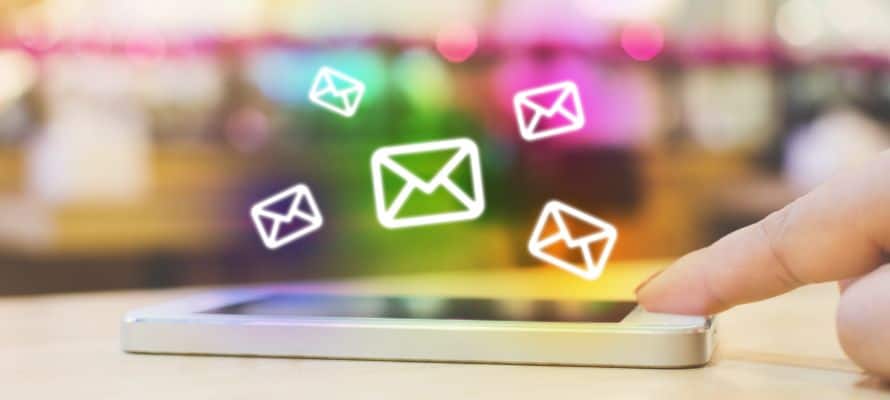
Creating an employee newsletter that people actually want to read requires thoughtful curation of content, engaging storytelling, and a user-friendly format. It’s an opportunity for you to showcase your company’s culture, recognize employees, and build a sense of community. But all that’s much easier said than done. That’s why I’m going to share my top tips for getting the most out of your company newsletter!
To know whether your newsletter is performing, it’s helpful to compare against current internal communications standards. Here are updated data points and benchmarks:
• According to PoliteMail’s 2024 benchmark analysis (4+ billion internal emails), top-performing internal emails regularly see open rates well above 60 %.
• Internal click-through / engagement rates (for internal newsletters) often fall in the 7 % to 10 % range when content is relevant and well-segmented.
• Be cautious: list size matters. Staffbase data suggests that when distribution lists exceed ~1,000 recipients, open and click rates tend to drop versus smaller, more focused groups.
• Beyond opens and clicks, track dwell time (how long people read), forwards/shares, replies, reaction metrics (likes, emojis) or embedded polls (response rates).
• Use trending benchmarks as guardrails, but focus on your own improvement curve: e.g. Is your open rate increasing quarter over quarter?
• If possible, correlate newsletter metrics with business metrics (e.g. internal survey scores, retention, or eNPS) to demonstrate impact.
An employee newsletter is an internal communication tool used by companies to share important news, updates, and relevant information with their workforce. It serves as a regular digest of company events, business updates, operational changes, and employee recognition.
Employee newsletters are typically distributed via email, company intranet, or mobile apps, and they play a crucial role in keeping employees informed, engaged, and connected to the organization’s mission and culture.
So, what makes newsletters different from ad-hoc posts and emails? The purpose of an employee newsletter is to streamline and efficiently share internal communications. Consolidating regular updates and messages into one newsletter helps you stick to a cadence and cut down on the noise for your employees.
When done well, a newsletter helps you:
The content of a newsletter for internal communication can vary depending on your goals and priorities. However, some common topics include:
Your newsletter won’t be engaging just by including certain content sections though. It’s all about how you present the content that matters. Here are a few things to consider:
Let’s face it: no employee newsletter strategy is going to be perfect right out of the gate. We have to measure our success and improve.
Although there are many channels you can share your newsletter on, email is still one of the most common. Track the following email metrics to gauge the success of your newsletter on that channel:
Employee apps are the rising stars of internal communications channels. You can share your newsletter via your app as one PDF or even break it up into multiple posts. To measure the success of your app newsletter track:
Not all metrics are going to come from the platform you share your newsletter on. It’s also important to use employee surveys, focus groups, and one-on-one interviews to learn what’s resonating and what isn’t.
This can also be a great way to learn specific ideas to improve the newsletter as well as the best way to share that newsletter (e.g. what channel, what type of content, etc.).
Here are evolving strategies that top internal communicators use to make employee newsletters more effective:
• Hyper-personalization: Use role, location, department, or interest tags to serve customized content blocks in the newsletter, rather than a one-size-fits-all email.
• Multi-channel synergy: Integrate the newsletter with intranet posts, chat tools (Slack, Teams), mobile app push notifications, video summaries, digital signage, etc.
• Interactive elements: Embed polls, emoji reactions, one-question feedback, clickable menus, or mini quizzes to foster two-way engagement.
• Modular / skimmable design: Use short intros, bullets, bolded highlights, “read more” links — make it easy to scan.
• Leadership visibility and “voice”: Encourage short video messages or personal notes from executives.
• Audit & retire stale sections: Regularly remove newsletter sections or content types that consistently underperform.
• AI / automation support: Use AI tools for subject line tests, summarizing longer content, auto-suggesting related articles, or optimizing send times.
• Transparent “You said / We did”: Show readers that their feedback influenced changes — builds trust and signals responsiveness.
• Frequency & cadence review: Don’t overdo it. Monitor email fatigue and adjust frequency based on engagement metrics.
• Fresh content updates: Revisit examples, stats, and case studies every 6–12 months to keep your content up to date (helps SEO too).
As I mentioned, we don’t have to rely solely on sending our newsletters via email or…printing them out. 😨
There are many ways to repurpose your employee newsletter across your channels to extend its reach and impact. Not to mention, deskless workers probably don’t have access to business email anyway.
But don’t just copy and paste the exact same newsletter in the exact same format across all your channels.
Your email newsletter might work best with short text and images with links to key resources.
But your intranet newsletter can have embedded video, podcasts, and links to detailed stories and articles.
Your employee app newsletter could consist of individual posts spread out across the week, with push notifications on only the messages that are urgent or require employees to take action.
The sky’s the limit. But it’s important to figure out what content types (e.g. video, text) performs best on each channel. And who is reading the newsletter on each channel. Your frontline workers might prefer your employee app while your office staff may prefer their news via email. Understand your audience and cater the newsletter’s format to them!